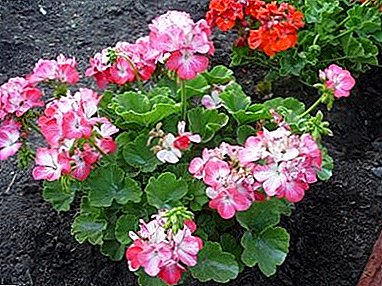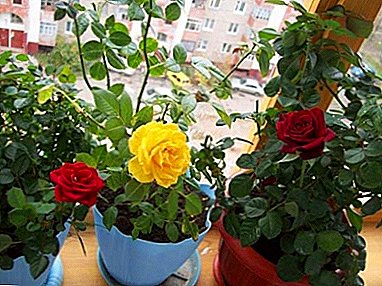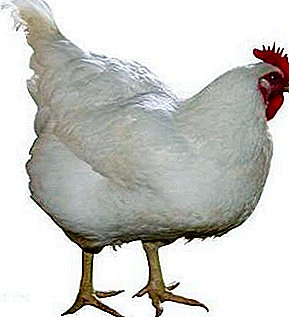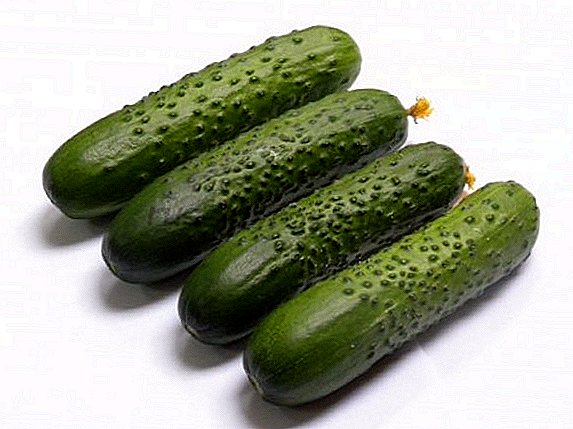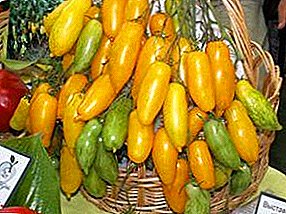 The homeland of the daylily is East Asia. This plant is familiar to mankind since ancient times, but for the first time science began talking about daylily in 1753. Swedish researcher Karl Linney called the plant gemerocallis, combining two Greek words: hemera (day, day) and callos (beauty). This name meant that the beauty of the plant lives only one day.
The homeland of the daylily is East Asia. This plant is familiar to mankind since ancient times, but for the first time science began talking about daylily in 1753. Swedish researcher Karl Linney called the plant gemerocallis, combining two Greek words: hemera (day, day) and callos (beauty). This name meant that the beauty of the plant lives only one day.
Its amazing beauty is famous not only for the cultivars of the daylily, but also for the “savages” that grow in the wild. Daylily flowers are extremely unpretentious, so much so that even flower growers themselves call it a plant of a lazy gardener.
Thanks to the efforts of American and Australian breeders, daylily in recent years has literally been at the "peak of fashion." Despite the fact that new types of plants turned out to be more "capricious", their incredible beauty compensates for the time and effort spent.
Did you know? The popularity of daylily among gardeners around the world has contributed to the breeding of hybrid varieties. This happened in the first half of the 20th century thanks to the efforts of the famous American botanist, Earl Stout.
When to plant daylilies
Daylilies - very demanding plants, their planting and care in the open field are of interest to both beginners and experienced gardeners.
 The main advantage of the daylily is the time of its landing in the ground. It is very long and covers the gap from early spring to late autumn. The choice of the most favorable time for planting a daylily directly depends on the climate zone, and this fact cannot be overlooked.
The main advantage of the daylily is the time of its landing in the ground. It is very long and covers the gap from early spring to late autumn. The choice of the most favorable time for planting a daylily directly depends on the climate zone, and this fact cannot be overlooked.
If your latitudes are distinguished by the early and rapid onset of winter, the daylily, which was planted in the fall, may not have time to take root before the first frost and simply perish. On average, this plant requires a month for reliable rooting. If you stay at the garden forms with an early or medium flowering period, then even in distant regions far from the south, the daylily you planted will have time to fully prepare for the winter period.
Important! According to experienced gardeners, the most suitable time for planting daylily in areas of the middle band are the last months of spring and summer — May and August.
Planting in the fall
 How to plant a daylily in the autumn? Planting a daylily is no different from planting any other plant. To do this, you need to dig a hole 30 cm deep. Then carefully lay the roots of the plant in it and bury it with soil to the root collar, and then pour it.
How to plant a daylily in the autumn? Planting a daylily is no different from planting any other plant. To do this, you need to dig a hole 30 cm deep. Then carefully lay the roots of the plant in it and bury it with soil to the root collar, and then pour it.
When planting in the autumn, do not forget to cover the daylily with straw, or to make an earthing up together with leaf humus. This will reliably protect the plant from cold weather and excessive moisture getting into the roots.
Landing in spring
Daylilies can be planted at the very beginning of spring, the main thing is that the soil should be sufficiently heated to prevent freezing. Of course, experienced gardeners know how to plant daylily in the spring, but what should newcomers do?
The first thing to start with is the preparation of the landing pit. Assume that the plant will stay in this place for at least 5 years, during which it will continuously grow and grow in size. Daylily should not be crowded in the place of its landing. If the soil in your area is saturated with useful substances, then the hole for the daylily should be of such a size that it easily accommodates the roots of the plant. If the soil is dry and heavy, then the pit should be 2 times larger, and sheet humus or compost mixed with sand should be laid on its bottom. You do not know how to save the daylily before planting in the spring? Just wrap the cutting in a newspaper, put it in the fridge, and it will remain fine until the planting itself.
 After the fossa is prepared, form a small pyramid of soil on its bottom. Place a daylily sapling on its top, and gently spread the roots down the sides of this pyramid. Sprinkle the hole with earth, at the same time lightly crush it with your hands and pour water on it. After planting, the root neck of the plant should be in the ground at a depth of no more than 2-2.5 cm, if this rule is not followed, the daylily will bloom badly. Also remember that the distance between the planted daylilies should be at least one meter.
After the fossa is prepared, form a small pyramid of soil on its bottom. Place a daylily sapling on its top, and gently spread the roots down the sides of this pyramid. Sprinkle the hole with earth, at the same time lightly crush it with your hands and pour water on it. After planting, the root neck of the plant should be in the ground at a depth of no more than 2-2.5 cm, if this rule is not followed, the daylily will bloom badly. Also remember that the distance between the planted daylilies should be at least one meter.
Choosing a landing site
Daylily is a plant that loves sunny and quite lighted places. You can break a whole flowerbed or plant daylilies along the paths, thus creating a bright and colorful carpet of "flowers-gramophones." The peculiarity of the daylily is that the lighter the color of its petals, the more sunlight it can receive. All daylilies have a certain shade, and daylily leaves, planted under the direct rays of the sun, quickly become white. It is better to plant darker types of daylilies in light penumbra, because, due to the bright sun, all the saturated colors of the petals quickly fade and become less beautiful and attractive.
Lighting and temperature
As mentioned above, daylilies love the lighted areas, but from planting in direct sunlight should refrain.
 The vegetation period of the daylily begins quite early. This happens when the snow melts and frost ends, when the temperature does not fall below 0 ° C at night. Usually the daylily awakening begins in mid-April. In the autumn, the nighttime temperature can drop to -3 ° C, and this leads to the fact that the daylily leaves begin to wither. In the early autumn frosts, the leaves of the flowers of the plant do not even have time to turn yellow and immediately fade. If the summer is cold, the daylily blooms noticeably worse. The buds of the plant become small and do not open completely, but may not open at all, just fading and falling down. The high summer temperature noticeably reduces the time of flowering of the daylily and burns the ends of its leaves.
The vegetation period of the daylily begins quite early. This happens when the snow melts and frost ends, when the temperature does not fall below 0 ° C at night. Usually the daylily awakening begins in mid-April. In the autumn, the nighttime temperature can drop to -3 ° C, and this leads to the fact that the daylily leaves begin to wither. In the early autumn frosts, the leaves of the flowers of the plant do not even have time to turn yellow and immediately fade. If the summer is cold, the daylily blooms noticeably worse. The buds of the plant become small and do not open completely, but may not open at all, just fading and falling down. The high summer temperature noticeably reduces the time of flowering of the daylily and burns the ends of its leaves.
What kind of soil like day lily
 The composition of the soil in which the daylily is grown does not play a large role for this crop. The plant is quite enough ordinary garden land. If this soil is not very nutritious, then it can be easily fertilized with the help of compost or a variety of mineral compounds. As a rule, such compositions are sold in any flower or garden store. If the soil is too heavy and dense, then it can be slightly diluted with ordinary sand so that it does not stagnate excessive moisture. The daylily can also grow in the sand, but in this case it requires more frequent watering, as water in such a ground evaporates quite quickly.
The composition of the soil in which the daylily is grown does not play a large role for this crop. The plant is quite enough ordinary garden land. If this soil is not very nutritious, then it can be easily fertilized with the help of compost or a variety of mineral compounds. As a rule, such compositions are sold in any flower or garden store. If the soil is too heavy and dense, then it can be slightly diluted with ordinary sand so that it does not stagnate excessive moisture. The daylily can also grow in the sand, but in this case it requires more frequent watering, as water in such a ground evaporates quite quickly.
How to plant a flower
Before you start planting a daylily, it must be lowered into the water for a while with diluted growth stimulants. Such stimulants are suitable such drugs as "Zircon", "Epin", "Gumat", etc.
Since the daylily is a perennial crop, the place for its planting should be selected and prepared with special care. This plant requires a sufficiently large amount of space in the flower bed. So, the hole for planting a daylily should be at least 30 cm deep. Also in this hole, you must first pour the peat mixture, and then add a small amount of potassium phosphate fertilizer. After that the daylily gently sinks into the hole. The plant should be planted to the level of its root collar. All the remaining space of the fossa should be covered with garden soil, and then it must be compacted and watered thoroughly.

Important! If moisture is quickly absorbed, it means that the soil was not sufficiently compacted. In this case, simply add dry soil and well tamp the ground.
How to water a daylily on a bed
Daylily is a plant that requires high-quality watering. With a lack of moisture, its flowering deteriorates significantly, and the buds become dull and small.
Particularly careful irrigation rules should be observed during the growing season. The rate of moisture directly depends on the soil in which the daylily grows. In order that the daylily does not experience a moisture deficiency, it is necessary to regularly monitor the soil around the stems — it should not dry out. For irrigation, it is preferable to use a large amount of water to moisten the soil to a half-meter depth.
 Daylilies must be watered at least once a week. If the daylily grows in light sandy soil, it should be watered more often, and it is also desirable to mulch the soil around the plant to slow the evaporation of moisture.
Daylilies must be watered at least once a week. If the daylily grows in light sandy soil, it should be watered more often, and it is also desirable to mulch the soil around the plant to slow the evaporation of moisture.
Watering is best done in the evening, but before dark. It is not recommended to pour water directly on the buds and leaves of the plant, as from this they can become stained. Water the plant at the very root, using an ordinary garden watering can with a tip in the form of a wide nozzle - so the water jet will not wash the ground from under the daylily root.
Top dressing and daylily fertilizer
Fertilizer and daylily feeding is carried out after studying the composition of the soil, after which the fertilizer is selected.
 The main rule - any fertilizers are applied no earlier than 2 weeks after the rooting of the plant. A young plant will need 2-3 additional feedings per season, a more adult (5-6-years old) and abundantly flowering daylily will need 4-5 feedings.
The main rule - any fertilizers are applied no earlier than 2 weeks after the rooting of the plant. A young plant will need 2-3 additional feedings per season, a more adult (5-6-years old) and abundantly flowering daylily will need 4-5 feedings.
- In early spring, the daylily is fed with a full range of mineral fertilizers. The most common is NPK 16:16:16 (diluted in proportion: 1 tablespoon of granules per 10 liters of water).
- In April and May, in order to increase the growth rate, complex fertilizers containing a large amount of nitrogen (diammonium phosphate, ammophos, nitroammophosphate) are added.
- In summer, when the daylily blooms, it can be fed organic. For this purpose, a solution from mullein, chicken manure or fermented grass is suitable.
- At the end of flowering (early autumn) fertilizer is carried out with sulphate with ash, or with a nitroammophore - this depends on the climate. This dressing has a positive effect on the increase in the size of flowers and on their number in the new season.
How to propagate the plant correctly
 Daylily is a fairly unpretentious plant that can grow in one place without a transplant for 12-15 years. But this is undesirable, because after a certain time the flowers will become noticeably smaller, and the bush will take on a somewhat neglected form. And the old, overgrown bush after its transplantation can get sick and die. In order to avoid such problems, it is worth to start division and transplantation once every 5-6 years. Daylily can be propagated using several basic methods, each of which has both advantages and disadvantages.
Daylily is a fairly unpretentious plant that can grow in one place without a transplant for 12-15 years. But this is undesirable, because after a certain time the flowers will become noticeably smaller, and the bush will take on a somewhat neglected form. And the old, overgrown bush after its transplantation can get sick and die. In order to avoid such problems, it is worth to start division and transplantation once every 5-6 years. Daylily can be propagated using several basic methods, each of which has both advantages and disadvantages.
Did you know? The Germans jokingly say that the daylily is a flower of intelligent lazy people, that is, gardeners who prefer beautiful plants that do not require long work to grow them.
Seed method
The reproduction of daylilies by seed is a fairly common method among gardeners. Daylily seeds can quickly lose their germination, which is why freshly harvested seeds are best planted in the autumn. The sowing process is very simple and does not require any special tools and skills. Take the seeds and sow them in the prepared soil (fertilized and dug up), deepening them to a depth of 2 cm. If for some reason you did not have time for autumn sowing, you can transfer it to spring, most importantly, do not forget to carry out a preliminary seed stratification (imitation of natural conditions for their awakening).
Vegetative methods
As already mentioned, the best time for daylily breeding is spring. In the fall, they can also be transplanted, but daylily cuttings should be large.
 The reproduction of daylilies by cuttings begins with the selection of a strongly overgrown bush, which is time to replant. Dig a shrub and, using shears or garden shears, cut off all the green mass and leave the hemp around 15-20 cm high. To cut the greens is necessary in order to restore the balance between the greens and damaged roots.
The reproduction of daylilies by cuttings begins with the selection of a strongly overgrown bush, which is time to replant. Dig a shrub and, using shears or garden shears, cut off all the green mass and leave the hemp around 15-20 cm high. To cut the greens is necessary in order to restore the balance between the greens and damaged roots.
Now you can begin to divide the bush. You can do this by using forks, dividing them with a daylily bush into small cuttings. If you didn't have a fork, you can try to do it by hand. Then dig a hole along the length of the cutting and put a small handful of potassium sulfate on its bottom, since daylilies need weakly acidic soil. Seat the stalk in the hole to the level of the root collar, gently sprinkle with earth, tamp, and then pour it.
A little trick to make the daylily bloom faster
Did you know that by planting hybrid daylilies, you can contribute to the rapid appearance of additional shoots, thus causing the bush to grow? As soon as the shoots of the hybrid daylily reach a height of 5-6 cm, cut them about half. Such a simple manipulation will cause the plant to give a bush with a large number of layering and repeatedly increase the number of peduncles.
 Daylily - a real decoration of the garden plot. Give him a little attention, and he will delight you with his rainbow colors from early spring to late autumn!
Daylily - a real decoration of the garden plot. Give him a little attention, and he will delight you with his rainbow colors from early spring to late autumn!




